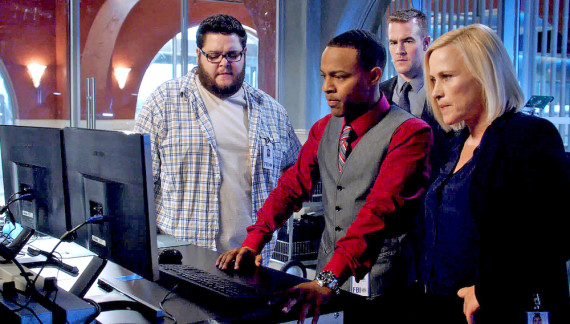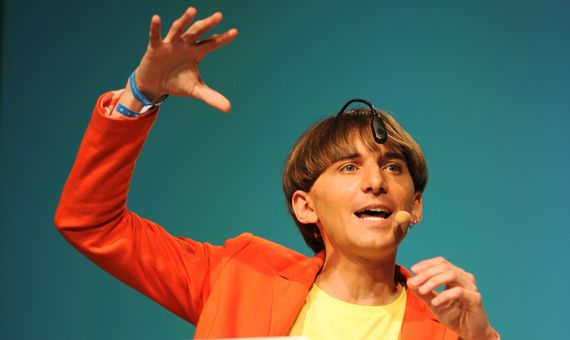A hacker in the United States must show how far he would be willing to go in order to join a group of cybercriminals. There are no limits. The young man decides to hack a roller coaster, killing several of the riders. “What happens in the virtual world impacts the real world,” says cyberpsychologist and FBI special agent Avery Ryan. This entire plot is part of the TV series CSI: Cyber. Nothing is real. Nothing, that is, except the statement from Agent Ryan, which actually belongs to one of the most influential (real-world) cyberpsychologists. Mary Aiken holds a doctorate in psychology, is a pioneer in this new field, and is blond—as she herself jokes—just like the character inspired by her on CSI.
The increasing reliance on technology is changing our behaviour and has made us more confident and uninhibited on the Internet and therefore more vulnerable. The need for connectivity has spread to our entire surroundings, even reaching our own bodies. And if we are connected, we are hackable.
Aiken specialises in studying the impact that technology has on our behaviour and on online criminal behaviour. “I study human interactions with technology and digital media: anything from cell phones to cyborgs. But mostly I concentrate on Internet psychology. If something qualifies as ‘technology’ and has the potential to change human behaviour, I want to look at how—and consider why,” Aiken said during a conference at Cyber Week 2017 in Tel Aviv, Israel.
Aiken’s work is based on a series of ideas, which have served her in repeated collaborations with Interpol, the FBI and the White House, among other entities. The first concept is that people behave differently when interacting through technology than in the real world. One of the main effects is anonymity. “It’s the modern-day equivalent of that superhero power invisibility. It also fuels online disinhibition.”
Everything is amplified in the virtual world
Her second idea: “I have been involved in a dozen different research silos, and have studied everything from organized cybercrime to cyberchondria—health anxiety facilitated and amplified by doing online medical searches—and the one thing I have observed over and over again is that human behaviour is often amplified and accelerated online.” Aiken has a name for this: the cyber effect. “Altruism, for example, is amplified online—which means that people can be more generous and giving in cyberspace than they are face-to-face. We see this phenomenon in the extraordinary growth of non-profit crowdfunding online. Another known effect of cyberspace is that people can be more trusting of others they encounter online, and can disclose information more quickly. It means that people tend to feel safe when they aren’t. Due to the online disinhibition effect, individuals can act as if they were drunk,” she describes in depth in her book with the same name: The Cyber Effect.

Aiken’s last key idea is about how individuals ignore all these changes that occur in them. Humans are adaptable and adjust our behaviour when we change environments: new job, new city or new country. “Many people deny the awareness that they’ve entered a new environment when they go online, so they remain ignorant—and are fooled by their sense that nothing has changed. They are sitting in their own homes, surrounded by familiar objects, after all, and their bodies are resting in the cushions of familiar chairs and sofas. But their minds have “gone” somewhere. The conditions and qualities of the online environment are different from real life. That is why our instincts, which were honed for the real world, fail us in cyberspace.”
The consequences of disinhibition and lack of caution when we move around the web can be increasingly serious with the advance of digital tools. It is no longer just that our credit card can be cloned or our identity impersonated, but that, as the scope of uses of facial recognition expands, even our face is no longer safe with us. Deepfake technology has had entertaining uses as well as some nefarious ones, such as pornographic clips in which another person’s face is inserted. But these cases show how the old cliché of fiction—impersonating someone’s fingerprint to get past a biometric checkpoint—no longer even needs a severed finger. Today researchers are also moving towards recreating a face from the voice, which will add another challenge to the preservation of our privacy.
Virtual evidence at the scene of the crime
Within cyberpsychology, Aiken specializes in forensics, which is dedicated to studying the evidence of virtual behaviour that is left at the scene of the crime. “As I like to think of it, the cyber footprint.” Aiken points out that the study of virtual traces remains very similar to real traces. “Every contact leaves a trace. This is just as true in cyberspace.”

This work deals with predicting the virtual behaviour of individuals, studying juvenile cybercrime—often manifested as hacking—to creating profiles about criminal behaviour such as cyber bullying. New technologies are closely related to her work. Aiken explores the solutions that artificial intelligence can bring, such as finding patterns about paedophiles, and also the problems that these can entail. For example, Aiken considers that Big Data is a technology that has facilitated human trafficking.
One of the early influences on Mary Aiken was J.C.R. Licklider, an American psychologist and computer scientist who wrote the work Man-Computer Symbiosis back in 1960. This essay predates the birth of the Internet, but the potential for a symbiotic relationship between humans and machines was already advancing.
Bodies connected to ‘hackable’ machines
This relationship between humans and technology has become more real since the development of the brain–computer interface (BCI). This technology was created by major research centres around the world, and has also been applied for a nu

mber of years now by some of the world’s most important tech tycoons, such as Mark Zuckerberg—founder of Facebook—and Elon Musk, creator of Tesla and Space X.
They are all trying to overcome this last barrier: connecting our brain to so that we can interact with the outside world. The consequences of achieving a real connection seem like science fiction: people with spinal cord injuries who can control their wheelchairs or prosthetic limbs with their thoughts. As the technology of building bionic limbs progresses, so does the way they are connected to the brain to provide new capabilities. For example, the latest generation of BCIs are already capable of transmitting touch sensations to the brain, giving the mind feedback that allows movements to be controlled with greater precision.
Implantable electronic devices can also function to improve and monitor our health; pacemakers or deep brain stimulation electrodes are no longer novelties, but in the future we will be able to control broader aspects of our bodily functioning thanks to technology. As John Lyons, founder of the International Cyber Security Protection Alliance, warns: “In about five years we will be able to record everything about our medical condition and transmit it live to our doctors. If you’re diabetic you will know immediately if you need to take less or more sugar. This interaction will bring benefits, but also threats. The concern will no longer be about whether you have lost money in your bank account, but whether a hacker can make your heart stop beating.”
At the same time that scientists are making progress towards restoring lost abilities or improving health through bionics, there is also a movement in the form of communities of biohackers who are trying to increase their capabilities by inserting electronics into their bodies. An example is the colour-blind artist Neil Harbisson, who in 2004 had an antenna implanted in his skull to receive electromagnetic signals —colours— which are transformed into audible vibrations through his skull, allowing him to “hear” colours. As a result of using the antenna, he also links what he hears through his ears, such as music or a voice, to different colours, allowing him to paint sounds. Harbisson has experimented with other systems, such as a type of watch implanted in his head or a tooth with Bluetooth communication, called, of course, Bluetooth Tooth.

This movement represented by Harbisson, who identifies as a cyborg and trans-species, has given rise to a group of extreme biohackers known today as grinders. But while this may sound eccentric, and perhaps even dystopian, to most humans, it is actually not so far removed from everyday reality: in recent years, some companies have launched schemes to replace the classic access or facility use cards with microchips implanted under the skin. Although there is an ethical debate, this practice also has its advocates.
But this is not the end of the ways in which we are increasingly hackable. The unstoppable need for connectivity has led to millions of objects being connected to the Internet. Refrigerators, washing machines, cars and lamps can now be controlled by an app. The Internet of Things (IoT), on which we are increasingly dependent, is making our lives easier and providing us with functions we could not access before, such as activating our home alarm with a smartphone from halfway around the world. But as we become ever more connected, we also become more exposed. Fortunately, that CSI roller coaster is still just fiction, but it is no longer science fiction.
Beatriz Guillén Torres y Javier Yanes
Comments on this publication